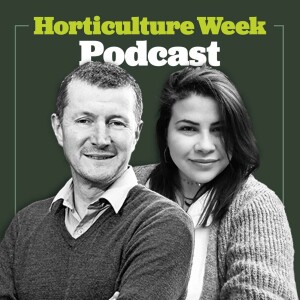
The hidden biodiversity of moss with Dr Neil Bell of RBG Edinburgh
 2023-09-29
2023-09-29
Dr Neil Bell is a bryologist at the Royal Botanic Garden Edinburgh. Much of his research is focused on quantifying, understanding and promoting Scotland’s globally important bryophyte flora, of which mosses are part (along with liverworts and hornworts).
This year is a big year for the bryophyte world: the British Bryology Society celebrates its centenary and in tandem Neil has published his book, The Hidden World of Mosses (published by RGB Edinburgh) which, with the help of exquisite photography, he hopes will open people's eyes and minds to the topic:
"People see moss as a substance, as almost as a sort of amorphous green stuff, which is growing on top of the wall, they tend to have a negative approach to it. Because they're not seeing the difference between the individual plants, they're not seeing how interesting and actually how beautiful they are."
A biologist and taxonomist, Neil is also editor-in-chief of the Journal of Bryology and in this podcast he relates exactly why he finds bryophytes so fascinating, including the role they play in peat creation and carbon capture:
"Certain bryophyte-rich ecosystems represent massive carbon sinks.
"[Peat] is basically undecomposed organic matter. It's undecomposed moss. And on the top layer... is a layer of living sphagnum moss. Sphagnum species are adapted to maintain this habitat in this particular state and prevent decomposition of the peat underneath which would lead to the release of this carbon dioxide into the atmosphere. It creates a sort of wet blanket over the soil. It also keeps it very acidic, which prevents decomposition.
"About 20% of the carbon stored on land in natural habitats is actually in the form of peat, so it's really quite a huge amount. So it's really important that we maintain peatland ecosystems."
He outlines the role mossy habitats can play in flooding mitigation:
"All these bryophytes, when it rains, are very quickly ...absorbing a lot of this water and keeping it in their tissues, and then over then a space of days gradually releasing again into the rivers. It just basically means that the flow of water through that habitat is slowed down and buffered and thus flooding is less likely than it would be otherwise."
Neil has a particular fascination for the habitats in Scotland - including a richly biodiverse temperate rain forest - which hosts extremely rare, even unique species. And there is much much more to discover:
"Once you discover that diversity is there, and it's not something you ever heard about before, it's sort of like another world opens up, a veil is taken away from what was previously a completely hidden area of biodiversity."
Hosted on Acast. See acast.com/privacy for more information.
More Episodes
Create your
podcast in
minutes
- Full-featured podcast site
- Unlimited storage and bandwidth
- Comprehensive podcast stats
- Distribute to Apple Podcasts, Spotify, and more
- Make money with your podcast
It is Free
- Privacy Policy
- Cookie Policy
- Terms of Use
- Consent Preferences
- Copyright © 2015-2024 Podbean.com






